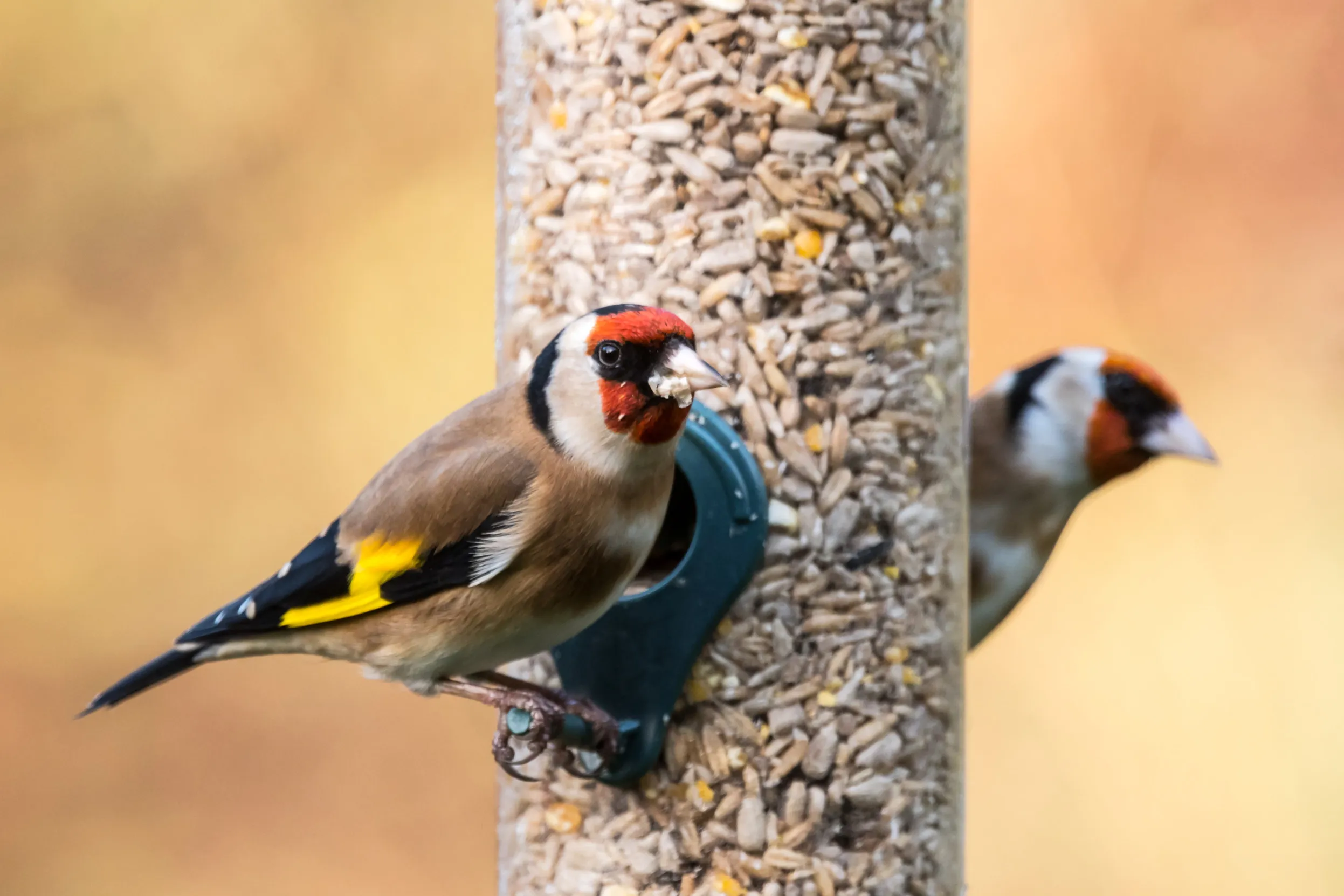How and what to feed your garden birds
Bring birds to your garden by putting out food for them. Appreciate their colours and fascinating behaviour, and attract them to your garden year round. It’s an easy activity to get kids excited about nature, and gives you a little wildlife joy from your window.

You should get the fastest results from putting up feeders in winter, but it’s great to leave food out all year if you can.
If you're looking for some bird food, take a look at the RSPB online shop, where we sell lots of good quality bird food.
Instructions
What not to feed garden birds
First up, there are some foods you should never put out.
Avoid
- All salted foods, as they dehydrate birds
- Cooked food, as this can attract unwanted visitors, such as rats
- Loose peanuts. Keep peanuts in a feeder so small chunks can be nibbled
- Dry, hard foods or bread during the spring or summer months. Parent birds might take these back to their nests and their young can choke on it
Poor quality peanuts can carry the aflatoxin fungus, which kills birds if they eat it. Make sure you buy peanuts that are guaranteed aflatoxin-free from a reputable supplier.

Which bird feeders to get
Invest in quality feeders to keep food dry and stop it going off.
To get started, try:
- A hanging plastic feeder containing sunflower hearts. Great for finches, tits and sparrows
- A hanging mesh feeder with peanuts. Great for tits
- A hanging mesh feeder with fat balls. Great for tits and sparrows.
- Adding feeder trays where possible to collect fallen food and encourage more birds to feed
Fill the holes and cracks of a post or suspended log with fatty food, such as suet, for agile birds, such as Tits, Nuthatches, Woodpeckers, Treecreepers and even Wrens.
Thrushes and Dunnocks prefer to feed on the ground. For these birds, scatter food on the lawn or use a ground feeding tray or hopper well clear of cover to avoid lurking cats. Remember to change the area you scatter the food over every few days, and never put out more than is eaten the same day.
If you put food such as apples on the ground, space it out in different places in the garden. This will reduce competition between birds so that more birds can feed at any one time. If there is snow on the ground, clear small areas before putting down the food.
Mesh bags – a warning
Peanuts and fat balls are regularly sold in nylon mesh bags. Never put out any food in mesh bags. These may trap birds’ feet and even cause broken feet and legs. Birds with a barbed tongue, like woodpeckers, can become trapped by their beaks.